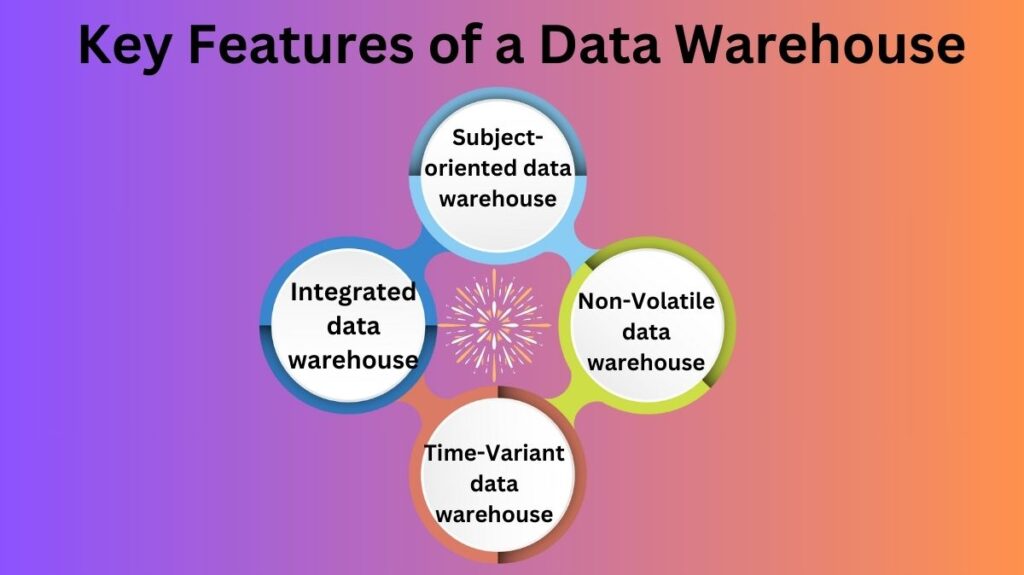Overview of Data Science Data Warehouse
The ever-changing field of data science requires good data management and storage to enable firms make data-driven decisions. Data Warehouse (DW) are crucial here. It’s a specialized storage system that manages enormous amounts of data and speeds up and improves analytical queries. In-depth discussion of data warehouses, data science, and associated technologies.
What is data warehouse?
DWs store data from multiple sources for analysis and reporting. Data warehouses can read and analyze large datasets, unlike transactional databases. This crucial tool for business intelligence (BI) and data science preserves historical data and performs complicated queries.
Data warehouses collect, organize, and optimize data from various sources for easier analysis. Customer databases, sales information, and financial logs are ETLed into the data warehouse for analysis.
Key Features of a Data Warehouse

Subject-oriented: Customers, sales, and goods are the main topics of a data warehouses, not transactions or activities. More meaningful and efficient analysis across business domains are possible.
Integrated:Integrate and standardize data from several sources. This is important to generate a single business perspective from all data sources. It allows users to query data from different departments, systems, and even external sources as a single dataset.
Non-Volatile:Data loaded into the warehouse is non-volatile. Our “non-volatile” data warehouses keep data stable for reporting and analysis, making them reliable for long-term decision-making.
Time-Variant:Historic data warehouses allow users to query and analyze trends over time. With this capability, firms can compare sales success over time or analyze long-term consumer behavior.
Why Data Warehouses Matter in Data Science
In data science, data warehouses are crucial. Many of these benefits directly improve data science workflows. DW are essential in data science for these reasons:
- Centralised Storage
Data scientists handle vast, complicated datasets from transactional databases, logs, APIs, and other data providers. This data is centralized in a DW, simplifying access, reducing redundancy, and ensuring organization-wide consistency. Data scientists can access the warehouse without cleaning and combining data sources. - Analytics-optimized
Operations databases are built for transactions (inserts, updates, deletes), but DW are optimized for complicated read-heavy queries. Data scientists can quickly aggregate, summarize, and filter massive datasets. By using specialized indexing and query optimization, data warehouses make large-scale studies efficient and scalable. - Analyzes Big Data
Businesses generate vast amounts of data at unprecedented speeds in the big data era. DW can scale as big data grows. The cloud allows modern DW to store and handle petabytes of data without hardware constraints. This scalability is essential for data scientists who evaluate growing datasets. - Trend Analysis using Historical Data
Historical data is crucial to data science’s pattern recognition, trend prediction, and predictive model development. Data scientists can study time-series data, develop regression models, and do cohort analysis in a data warehouse, which organizes years of historical data. It’s hard to gain valuable insights for decision-making without rich historical datasets. - Data Governance, Quality
Automatic data cleansing, validation, and transformation are common in DW. ETL ensures warehouse data is accurate, consistent, and formatted. Data quality directly affects model and analysis accuracy and dependability in data science. DW data governance features manage sensitive data in accordance with legal and regulatory regulations.
Datawarehouse Parts
Several critical components of a DW architecture help integrate, store, and analyze data. Includes:
- Datasources
The warehouse gets data from databases, applications, and other systems. These include relational databases, flat files, cloud services, and APIs. These sources’ data must often be transformed before warehouse loading. - Extract, Transform, Load
Data is extracted from numerous sources, formatted, and loaded into the data warehouse by the ETL process. Cleaning data, standardizing formats, fixing discrepancies, and aggregating or calculating are common transformation steps. - Database Base
Staging areas hold data before it is fed into the DW. Processed and sanitized raw data is stored here before being sent to the main warehouse. - Warehouse Database
The DW’s database is its core. Analytically queryable organized and converted data is stored here. Data is stored in a star, snowflake, or fact constellation schema for quick querying and reporting. - DataMarts
Marketing, sales, and finance departments employ data marts, which are subsets of the DW. Data marts enable specialized analysis and reporting while integrating with the DW. - Data science and BI tools
BI technologies and data science platforms allow data scientists and analysts to access warehoused data. Reports, dashboards, visualizations, prediction models, and sophisticated analytics are possible with these technologies.
Modern Data Warehouse Trends
DW technology evolves with data science and analytics. Modern data storage trends:
- Cloud storage
Amazon Redshift, Google BigQuery, and Snowflake are popular cloud DW. These platforms offer pay-as-you-go pricing, elastic scalability, and cloud-native tool integration. Cloud DW reduce on-premise infrastructure and scale resources as demand rises. - Live-data warehouse
Data warehouses were designed for batch processing and daily or weekly data updates. Modern data warehouses provide real-time data intake and querying as real-time analytics grows. Data scientists can use the newest data for fraud detection, personalized suggestions, and real-time dashboards. - Integrating Data Lakes
A more complete data architecture includes raw, unstructured data lakes and standard data warehouses. The scalability and flexibility of data lakes and the organized, high-performance querying of data warehouses can help organizations.
Conclusion
DW store and analyze massive volumes of data for data science. This simplifies data management, gives insights, and guides decisions.Data science will give data warehouses cloud warehousing, real-time analytics, and data lake connection. DW must provide data scientists with timely, dependable access to high-quality historical data as data volumes grow.
In conclusion, data science uses the DW to efficiently extract, transform, store, and analyze data. Current analytics and business intelligence are challenging without a DW. The DW will continue to help firms exploit their data assets to compete as data science matures.
